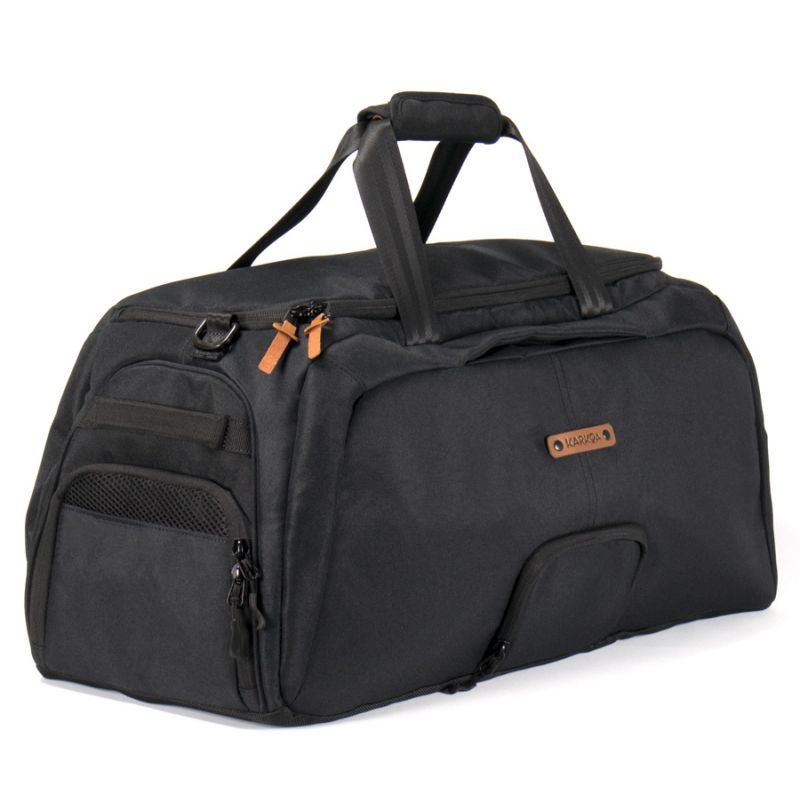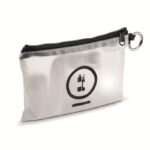This diploma is often required to take part in certain aquatic activities or to enter professions where swimming skills are essential.
Why a swimming certificate?
Swimming certificates are designed to assess and certify your aquatic skills at different levels. Each level measures your ability to perform specific strokes, distances and water survival skills. These certifications can start with learning the basics of swimming for beginners and extend to the advanced skills needed by professional lifeguards.
Obtaining these qualifications requires preparation and training. It’s important to choose a good training programme that focuses on swimming technique, breathing, endurance and safety skills. Whether you’re a beginner or an advanced swimmer, acquiring a swimming certificate can boost your confidence in your aquatic abilities and could even save lives.
The importance of a swimming certificate for children
Swimming is a very popular physical activity for children. Not only is it fun, it’s also good for their physical and mental health. However, it is important that children learn to swim correctly and safely. That’s where the children’s swimming certificate comes in.
Safety and drowning prevention
Swimming certificates are tests that enable children to obtain a swimming certificate certifying that they have acquired basic swimming skills. The swimming certificate is also important for children’s safety. It enables them to learn to swim properly and to become familiar with the water. Children who know how to swim are less likely to drown. What’s more, by learning pool safety rules, children are better prepared to deal with an emergency situation.
Developing swimming skills
The swimming certificate promotes the development of swimming skills. Children who learn to swim properly from an early age find it easier to swim later in life. This can enable them to take up swimming as a sport and take part in swimming competitions.
Official FFN swimming certificates
The FFN (Fédération Française de Natation) diplomas offer children a structured progression in the integration of swimming and safety skills. Each diploma represents a key stage in the development of these skills, from the age of 7.
Sauv’nage
The Sauv’nage is your first step into the world of swimming. It validates your ability to move around in the water in complete safety. You’ll need to demonstrate your ability to perform a variety of exercises, such as :
- Water entry and immersion: jumping into the water and coming up unaided.
- Stomach float: hold the horizontal position on the stomach for 5 seconds.
- Oriented immersion: swim towards a hoop, through it and then back up.
- Vertical balance: hold an upright position with the body immersed in a hoop.
- Stomach movement and immersion: move on your stomach while overcoming obstacles.
- Dorsal float: hovering at the surface on your back.
- Dorsal displacement: swim on your back, stay still for a moment.
- Exploring depth: diving to retrieve an object from the bottom of the pool.
The tests are carried out continuously, without leaning on the bottom or wearing goggles.
The Pass’sports de l’eau
After the Sauv’nage, the Pass’sports de l’eau broadens your horizons by introducing you to a range of aquatic disciplines. You’ll need to take part in and master the basics of three of the following sports:
- Sport Swimming : complete 50m demonstrating techniques such as the sink, side-breathing crawl and backstroke, adding a tumble turn.
- Water-polo : working as a team to pass the ball, swimming with the ball without losing it, and approaching a goal to shoot.
- Diving : perform jumps and rotations in the dry then perform four types of diving in the pool using the appropriate technique.
- Swimming with fins : swim 50m with fins and a snorkel, practising a continuous, controlled movement.
- Synchronised swimming: raise your body as high as possible to make an expressive movement with your arm, then return to a dorsal position and raise your leg as high as possible
The Pass’competition
The Pass’compétition is geared towards performance and competition. You will need to demonstrate your ability to:
- Perform strokes in accordance with competition rules.
- Use advanced swimming techniques.
- Understanding and applying race strategies.
This certificate is essential for those who aspire to take part in official competitions.
The ‘learning to swim’ diploma
This diploma enables every child to learn the fundamentals of swimming. The lessons are designed to ensure that you are comfortable in the water and have a basic understanding of water movement. This is an important introduction that prepares you for the more advanced certificates.

Free swimming certificate
Obtaining a brevet de natation represents a certification of your ability to swim independently over a specific distance. These distances vary, including events of 25 metres, 50 metres, 100 metres, and 200 metres. Regardless of age, whether you’re a child or an adult, you can take this diploma.
- Pass your diploma: To obtain your certificate,
go to your local swimming pool with your ID and
arrange to meet a lifeguard. A prior appointment may be
required. - To each his own: Depending on your personal or professional needs, the distance required will vary. For example, for future recreational activities or certain teaching professions, a 50-metre certificate may be sufficient.
Test format:
- Distance: Depending on the brevet chosen (25m / 50m / 100m / 200m).
- Swim: Free choice of swim.
- Start: No diving required, a jump is acceptable.
FFN federal certificates
The federal qualifications issued by the Fédération Française de Natation (FFN) are designed to train volunteer instructors for swimming clubs. They provide an introduction to teaching that can lead to a professional career, with exemptions granted in qualifying courses such as the BPJEPS AAN or DEJEPS.
Training and progression in the federal certification system
The training programme is based on a gradual progression, alternating between theory and practice in a club. You generally start at the age of 14 and must take the diplomas consecutively, unless equivalence is granted on the basis of your previous experience. You can only take one course per sporting season.
Safety and autonomy
With the exception of club assistants, licence holders can manage a group on their own. To do so, they have to pass a safety test after first aid training (PSC 1). This test includes an aquatic course and a rescue exercise.
| Diploma | Minimum age | Prerequisites | Apprenticeship and practical training |
|---|---|---|---|
| Club assistant | 14 years old | Sauv’Nage, PSC 1, FFN licence | 50 h club, 16 h theory |
| Federal certificate 1 | 15 years old | Sauv’Nage, PSC 1, FFN licence | 91 h between theory and club |
| Federal Certificate 2 | 16 years old | Pass’sports de l’eau, Brevet 1, PSC 1 | 138 h between theory and club |
| Federal Certificate 3 | 17 years old | Pass’compétition, Brevet 2, PSC1 | 147 h between theory and club |
| Federal Certificate 4 | 18 years old | Pass’compétition, Brevet 3, PSC1 | 360 h between theory, club and structure |
| Federal Certificate 5 | 18 years old | Pass’compétition, Brevet 4, PSC1 | Duration to be determined |
These diplomas prepare you for various responsibilities within clubs, from assistance to coaching competitive swimmers. They lay the foundations for a possible career in swimming instruction.

The regulatory framework for swimming certificates and diplomas in France
In France, the prerogatives associated with supervising and teaching swimming are governed by various certificates and diplomas. Each qualification determines the specific framework in which its holder can operate.
National Aquatic Safety and Rescue Certificate (BNSSA)
The BNSSA entitles you to supervise bathing areas open to the public free of charge, as well as those with paid access, with or without the presence of a lifeguard, subject to specific conditions. This diploma excludes any paid teaching and is obtained after a week’s training followed by an examination.
BPJEPS AAN (formerly BEESAN)
The BPJEPS AAN enables you to ensure safety in swimming pools, whether accessible free of charge or not, and to teach various aquatic activities. The training can last from 1 to 2 years, including theory classes and alternating practice.
The DEJEPS
With the DEJEPS, you can teach swimming and coach at all levels, including competitions. In addition to the certificate of specialisation in lifesaving, you can also supervise swimming pools. It corresponds to a qualification at bac +2 level.
The lifeguard certificate (SB)
The SB certificate prepares you exclusively to organise and supervise swimming activities in holiday and leisure centres. It does not include any teaching duties.
University diploma in aquatic rescue and safety
University diplomas that include the “lifesaving and safety in aquatic environments” module since 2010 enable you to become a lifeguard. They offer the opportunity to teach and supervise in swimming pools, as well as sometimes training groups of competitors, particularly with the STAPS degree specialising in sports training.
Swimming instructor
As a Moniteur Sportif de Natation, you are authorised to teach and coach up to regional level, but only within the framework of a club affiliated to the Fédération Française de Natation (FFN). This diploma entitles you to remuneration under these specific conditions. Table of prerogatives by diploma:
| Diploma | Monitoring | Teaching | Remarks |
|---|---|---|---|
| BPJEPS AAN | All swimming | All aquatic activities, excluding competitive training | – |
| University degree | All swimming | All aquatic activities | For some, competitive training |
| Federal patents | – | In affiliated clubs on a voluntary basis | – |
| Swimming Sports Instructor | – | In an affiliated club | Up to regional level |
| DEJEPS | All swimming (with additional certificate) | All aquatic activities | Bac +2 level |
| BNSSA | Public bathing areas (subject to conditions) | – | – |
| SB | Leisure and holiday centres | – | – |
| BEESAN | All swimming | All aquatic activities | Valid for active holders |
Discover the Karkoa swimming bag
If you’re looking for a spacious and practical swimming bag to carry all your swimming gear, the Karkoa sports bag is just what you need.
With volumes of up to 45 litres, it can easily accommodate :
- your swimming costume,
- your swimming goggles,
- your swimming cap,
- your pool towel,
- your training aids such as swimming plates,
- flippers
- and the board,
- and your laptop
- and a change of clothes.
The Tepee bag is specially designed for competitive swimmers who need lots of gear. Packed with cutting-edge features designed for athletes on the move, its cutting-edge, space-saving design maximises storage.
If you’re heading to the pool on public transport, the smartbag40E swimming backpack is for you. Its wide-opening main compartment is big enough to hold all your stuff and it’s very practical to carry.
Karkoa swimming bags have several compartments and multiple pockets for storing your belongings. The swimming backpack has separate compartments inside, so you can keep your clean or electronic items separate from dirty or wet ones. It also includes multiple front, back or side zipped pockets to store small items such as waterproof mp3s, pool length meters, keys, etc. There are also expandable mesh pockets, an insulated water bottle pocket and padded laptop storage.


















